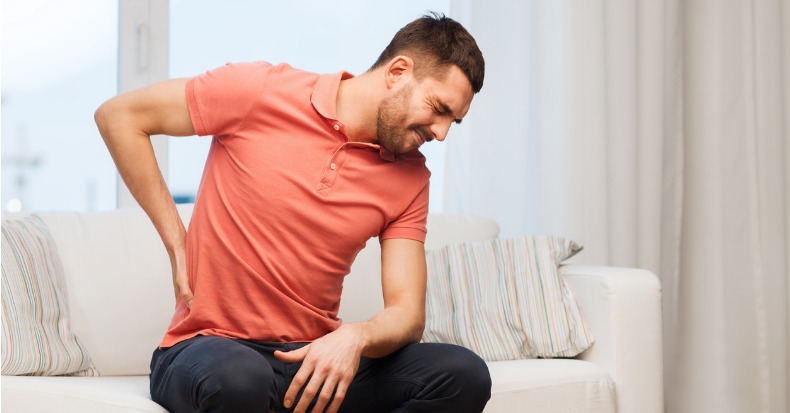Low back pain is a very common problem affecting 80-90% of all of us at some point during our lives.
But why? There are many reasons.
One of the biggest reasons is that we are two-legged animals carrying two-thirds of our weight above our waist. Studies have shown deterioration or arthritis occurs much sooner in us vs. our four-legged animal counterparts.
A 180 lbs (~81 kg) man carries roughly 120 lbs (~54 kg) above the waist. This means, every time he bends over, in order to stand upright, he needs to lift 120 lbs (~54 kg) PLUS whatever he is lifting. Hence, the argument of, “…but I only bent over to lift a pencil and my back went out,” seems impossible on the surface but in reality, the man in our example is lifting the pencil plus 120 lbs (~54 kg). Now, let’s add to that the point that a 5-pound (~2.2 kg) weight held out in front of the body with the arms stretched out straight can feel more like 50 pounds (~22 kg). Now, if that’s not bad enough, let’s assume all of this is happening from a bent-forward position, with a twist at the waist, with outstretched arms, while lifting a 20-pound (~9 kg) object. Get the idea? It’s amazing our backs don’t get injured every day as we lift grocery bags into the far end of a car trunk or when lifting a 30-pound (~13 kg) child in and out of a car seat, high chair, or when they are screaming and pushing away from us as we try to lift them!
In order to further appreciate why the low back is so vulnerable to injury, a basic understanding of anatomy is necessary. When we’re born, the back is made up of 33 segments of which five fuse by the time we’re about 18 years old to make up the sacrum (bottom of the spine) and four fuse to make up the coccyx (tail bone), leaving five lumbar (low back), twelve thoracic (mid-back), and seven cervical (neck) vertebra. These are stacked up on top of each other like building blocks and are connected to each other by a shock absorbing disk in the front and two smaller facet joints in the back, acting like a tripod.
In the low back, we’re supposed to bear about 80% of our weight in the front and 20% in the back but if our abdominal muscles are a bit out of shape and the pelvis rotates forwards, the curve in the low back increases and overloads the back of the vertebra (facets) making them vulnerable to injury.
The disk can become injured during bend/lift/twist movements. These movements can tear the outer tough fibers of the disk, allowing the central more liquid-like material to leak out. If this happens, the leaking or “herniated” disk can put pressure on the nerve that exits the spine and travels down our leg. If the pain pattern includes the back of the leg, it’s commonly referred to as “sciatica.”
Okay, enough about anatomy. What can we do to reduce the chances of having periodic low back pain?
Obviously, staying in shape is very important. Certain muscles of the body must be tight to keep us upright or standing. These muscles, such as the hamstrings, need to be stretched on a regular basis.
